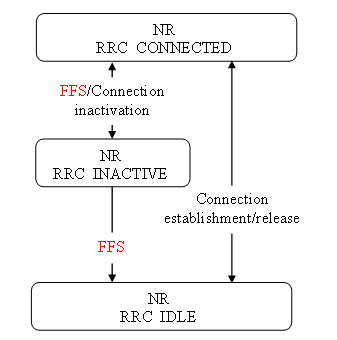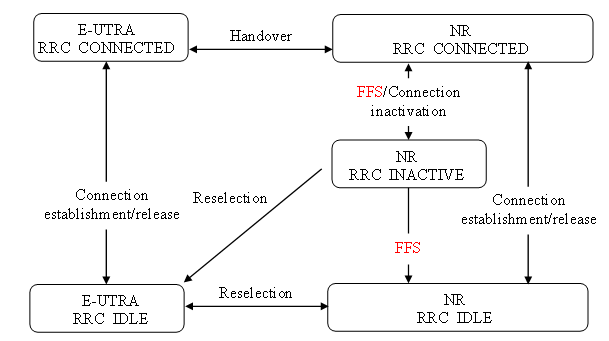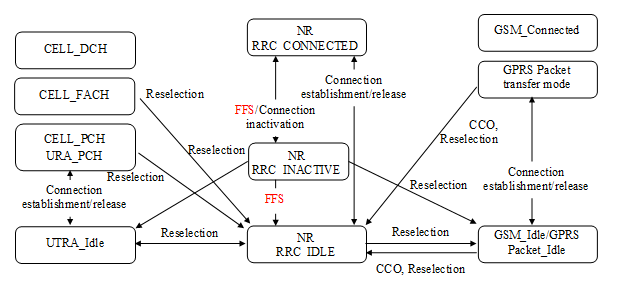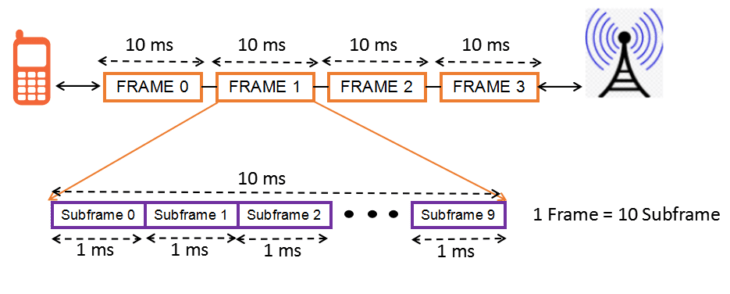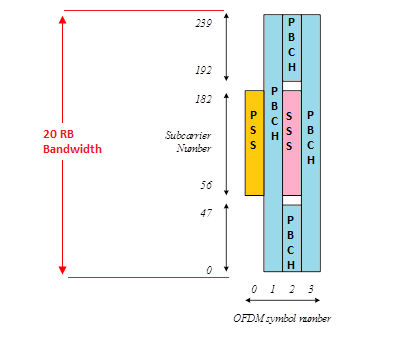5G NR RRC State Transitions
5G NR RRC State Transitions
5G NR is supposed to inter-work with the legacy technologies like LTE (E-UTRA), UMTS (UTRA) and GSM/GPRS (GERAN). New Radio has introduced a new RRC state called “RRC INACTIVE” to meet the requirement of 5G services.
New RRC Inactive State Characteristics
- Maintenance of context information by the UE and the network when the UE moves from “RRC Connected” to “RRC Connected Inactive.”
- Widely configurable DRX cycles to support a wide diversity of services with different requirements in terms of power consumption and accessibility delays.
- UE controlled mobility and RAN-based paging with optimized state transitions for the case where the UE is semi-static i.e. the UE remains in the same location after inactivity timer expires. The concept of camping for Idle UEs is extended to the RRC Connected Inactive UEs.
- Multi-RAT camping and access where the evolution of LTE is tightly integrated to the 5G RAN.
- Highly configurable procedures that may possibly take into account known characteristics at the RAN level such as mobility pattern and traffic characteristics for the different services and performance requirements in terms of delay accessibility.
5G NR RRC State Transitions
5G has three RRC state RRC CONNECTED, RRC IDLE and RRC Inactive state as illustrated in following the figure.
- When UE is in RRC CONNECTED, it can move to RRC IDLE mode with Connection Release and can move back to RRC connected with Connection Establishment
- UE in RRC INACTIVE state and can move to RRC CONNECTED or RRC IDLE
- But UE in RRC IDLE cannot move to RRC INACTIVE
5G NR RRC and LTE (E-UTRA) RRC Interaction
An overview of UE state machine and state transitions in NR as well as the mobility procedures supported between NR/NGC and E-UTRAN/EPC. NR RRC does not only involved in NR but also in other radio access technology as well. The interaction of NR RRC and LTE RRC can be is shown in the following figure.
- In CONNECTED mode, Handover can be performed between NR-cell to LTE-cell and LTE-cell to NR-cell
- In IDLE state, NR can reselect to LTE (E-UTRA) and LTE (E-UTRA) can reselect to NR
- In RRC INACTIVE state, NR can reselect LTE (E-UTRA) but LTE (E-UTRA) can not reselect to NR RRC INACTIVE state
5G NR, UTRA, and GSM/GPRS RRC States Interaction
The interaction of NR and UMTS/GSM RRC is illustrated in following the figure.
- In IDLE state, NR can reselect to UMTS (UTRA) and UMTS (UTRA) can reselect to NR
- In NR INACTIVE state, NR can reselect the UMTS (UTRA) IDLE, but UMTS (UTRA) IDLE can not reselect the NR INACTIVE state
- UTRA cell FACH and Cell/URA PCH can reselect to NR IDLE, but NR IDEL can not reselect UTRA cell FACH or Cell/URA PCH
- NR can reselect the GSM (GERAN) while it is in IDLE state
- GSM can do CCO (Cell Change Order) to NR while they are in IDLE state
- GPRS can reselect to NR IDLE even while it is in GPRS Packet Transfer Mode
- GPRS can do CCO (Cell Change Order) to NR IDLE while it is in GPRS Packet Transfer Mode

